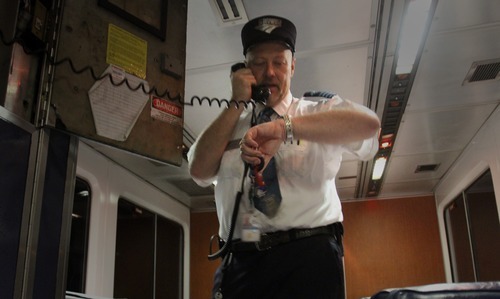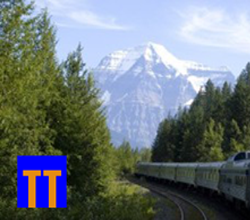Conductors and the Sound of Silence.
Of course there’s no actual research to verify this, but I have often heard that the most frequently asked question on an Amtrak train is . . .
“Why are we stopped?”
That may or may not be true, but not knowing why you’re in the middle of nowhere and not moving still ranks up there on the list of things that annoy passengers. We aren’t angry or upset—we don’t care that we’re stopped; we would just like to know why we’re stopped. And it’s frustrating because all it takes is one of the conductors to use the train’s public address system and say . . .

How hard is that? And yet there have been many times when the train has stopped and waited for 15 or 20 minutes without a peep from one of the conductors.
There was an egregious example of this a few days ago when an Amtrak train that originated in Washington and was headed for Boston stalled and was stopped on the tracks shortly after leaving New York City’s Penn Station. It was after midnight and, because the train had lost power, it was dark and there was no heat. Within 30 minutes, it was literally freezing cold.
I can’t believe there were no announcements at all, but many of the passengers complained that they were given only a little information. Granted, with no power coming from the head end, the PA system may not have been working. But, under those circumstances, the conductors should have gone through the train car-by-car giving whatever information they had and doing their best to answer questions. That goes a very long way in keeping a lid on the passengers’ frustrations.
As an aside, most of the time you don’t need an explanation from a conductor to know why your train has stopped, especially if you’re on a long distance train. Just look out a window on both sides of the train. If there’s another track out there, your train is probably on a siding waiting for a train coming the other way. If there’s no track on either side of your train, you’re still on the main line, but there’s probably a slower train up ahead.
The main thing is, don’t get anxious. Amtrak has allowed for delays in the schedule—it’s called “padding” in railroad vernacular—and chances are you’ll make up that time and will get to your ultimate destination on time or close to it.


General Rule P, paragraph two: When passenger service is disarranged, the public shall be informed of the probable length of the interruption; and, when ascertained, the time at which the service shall be restored.